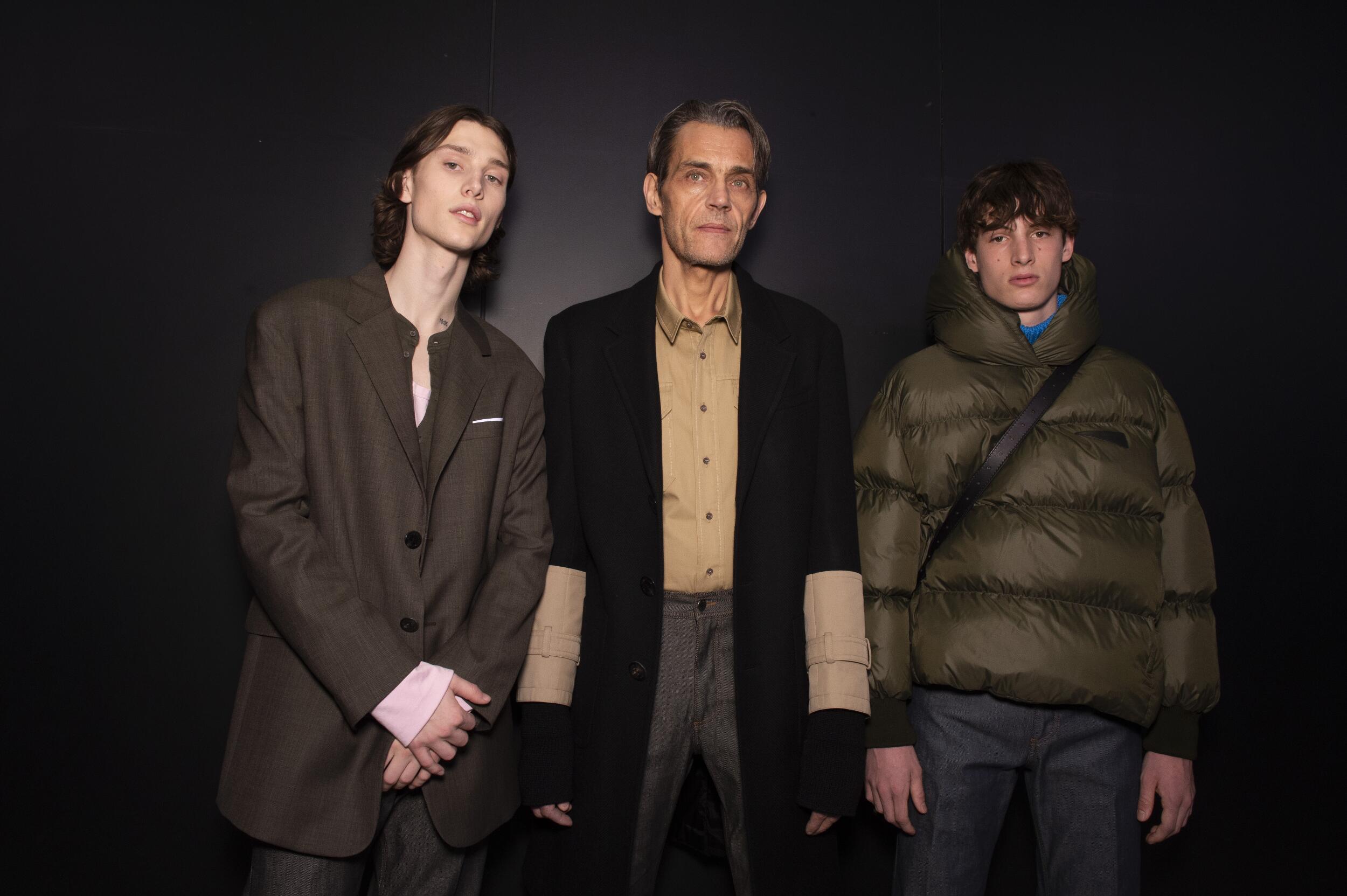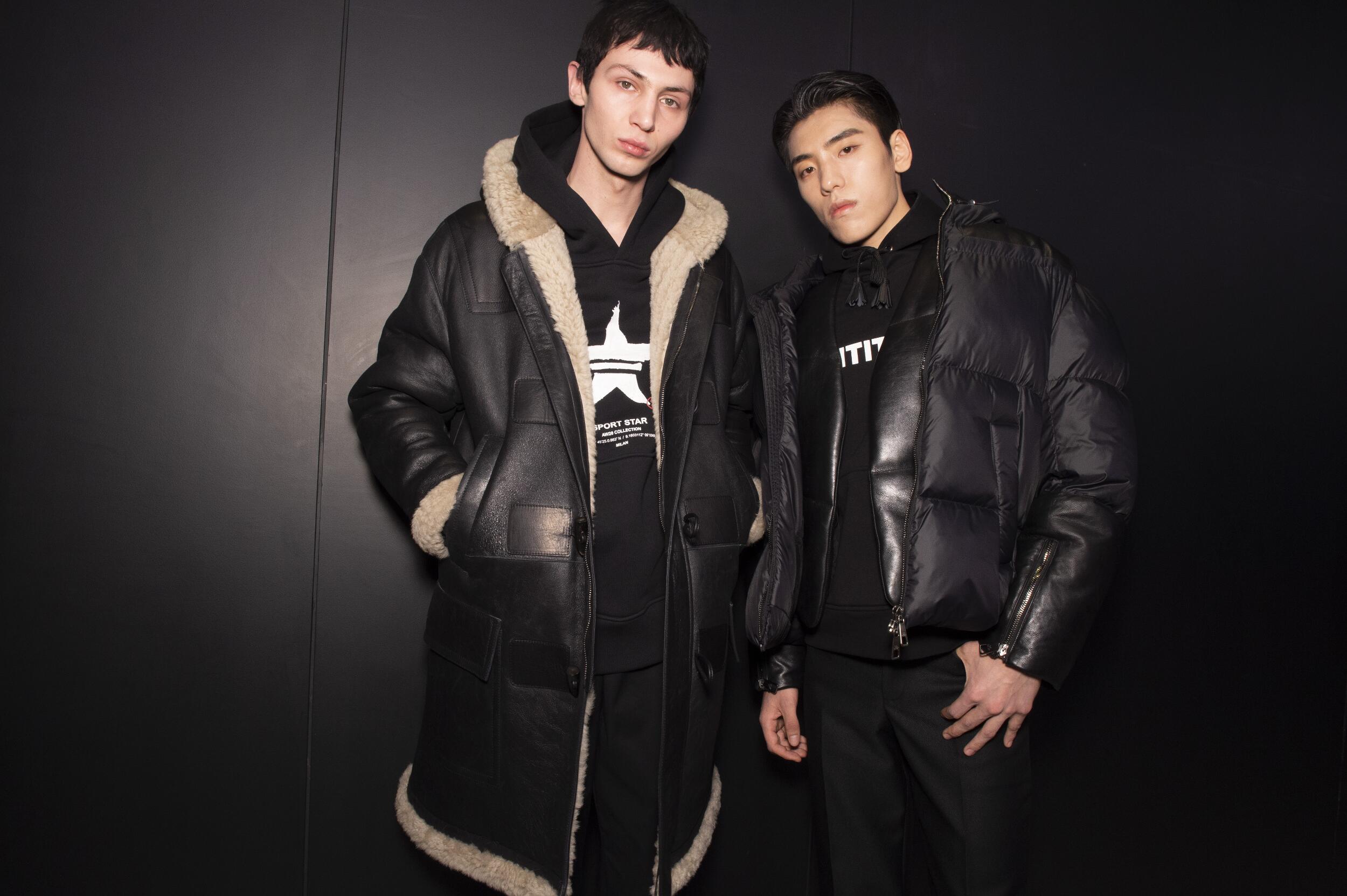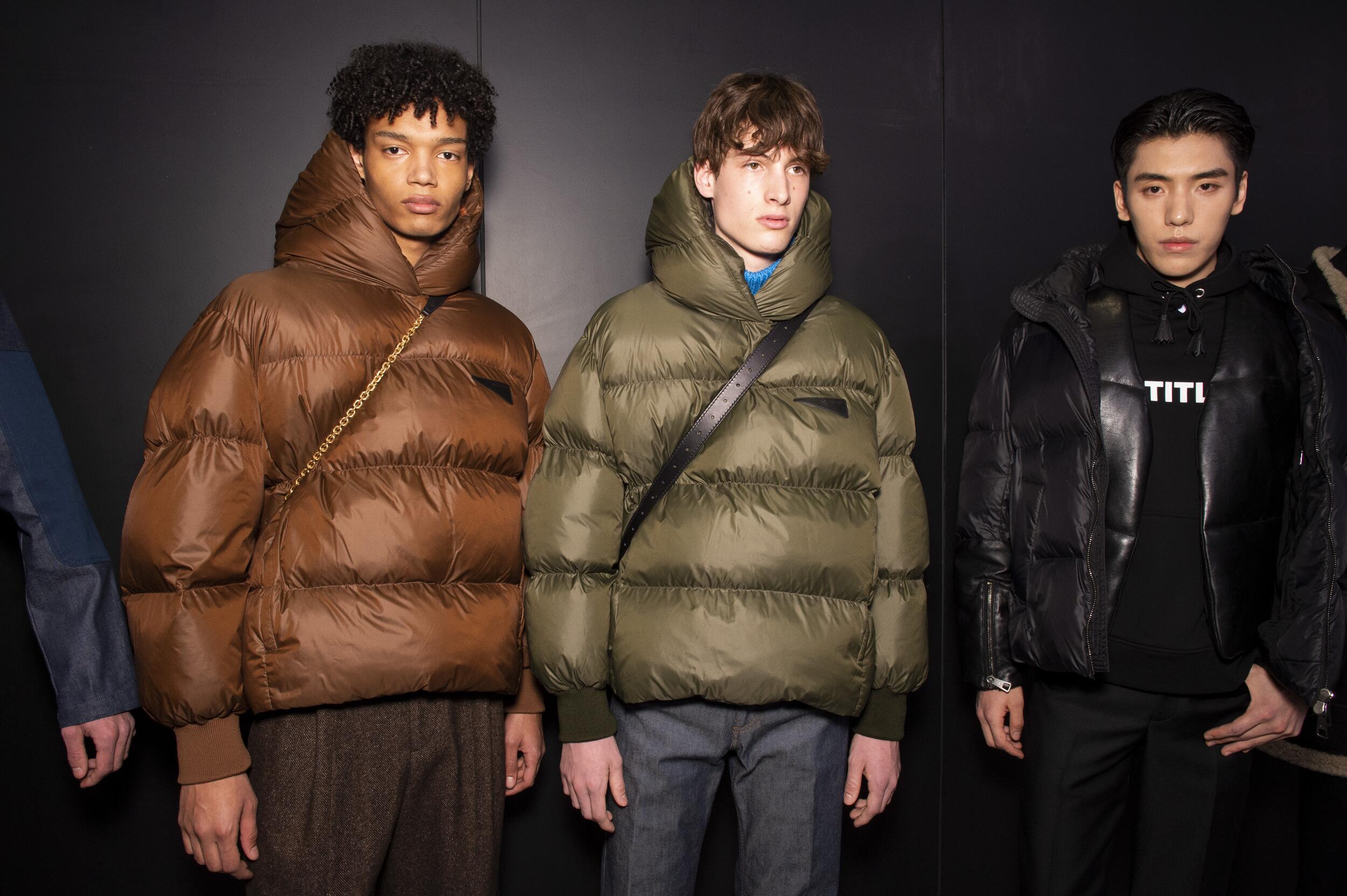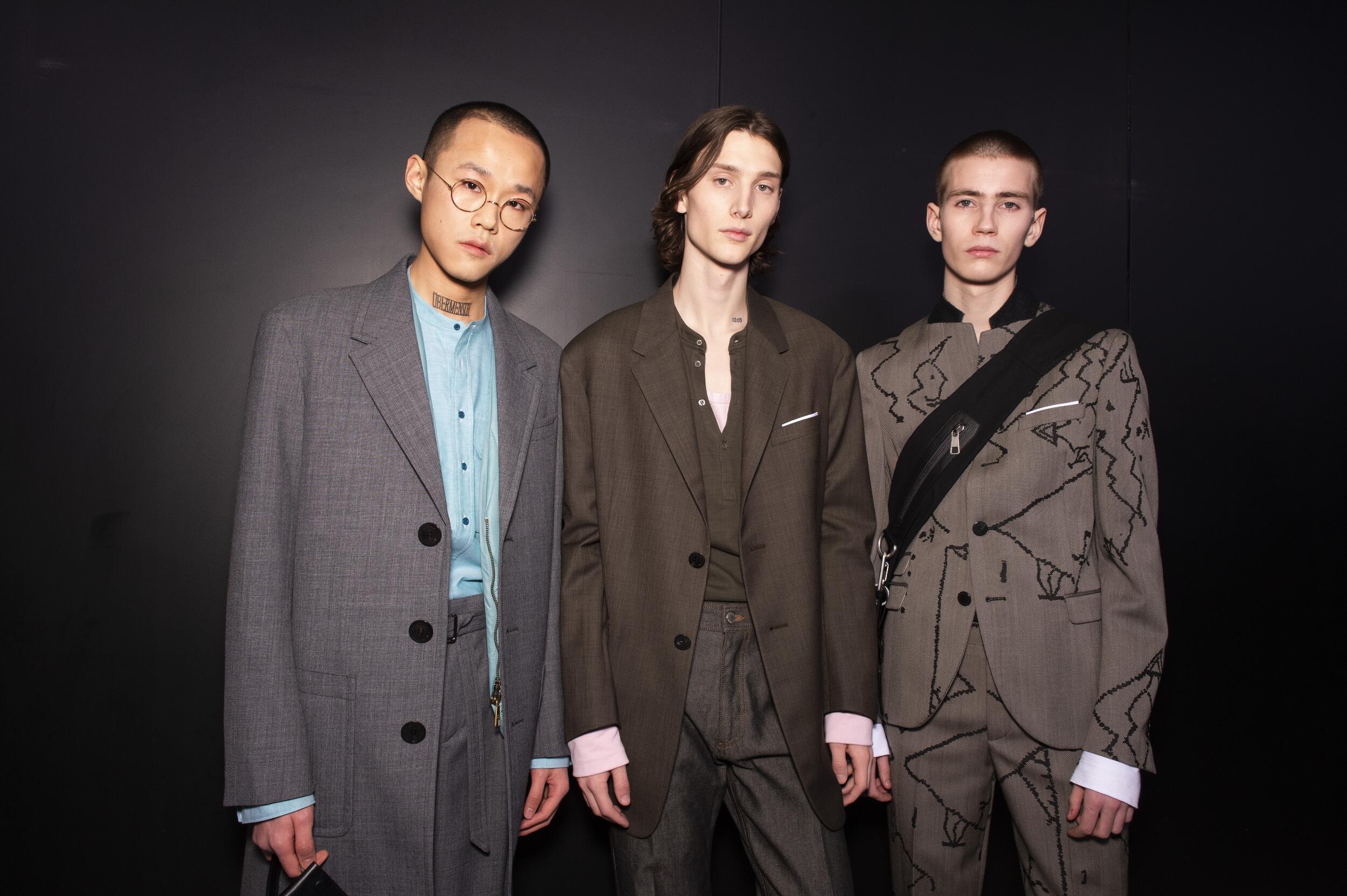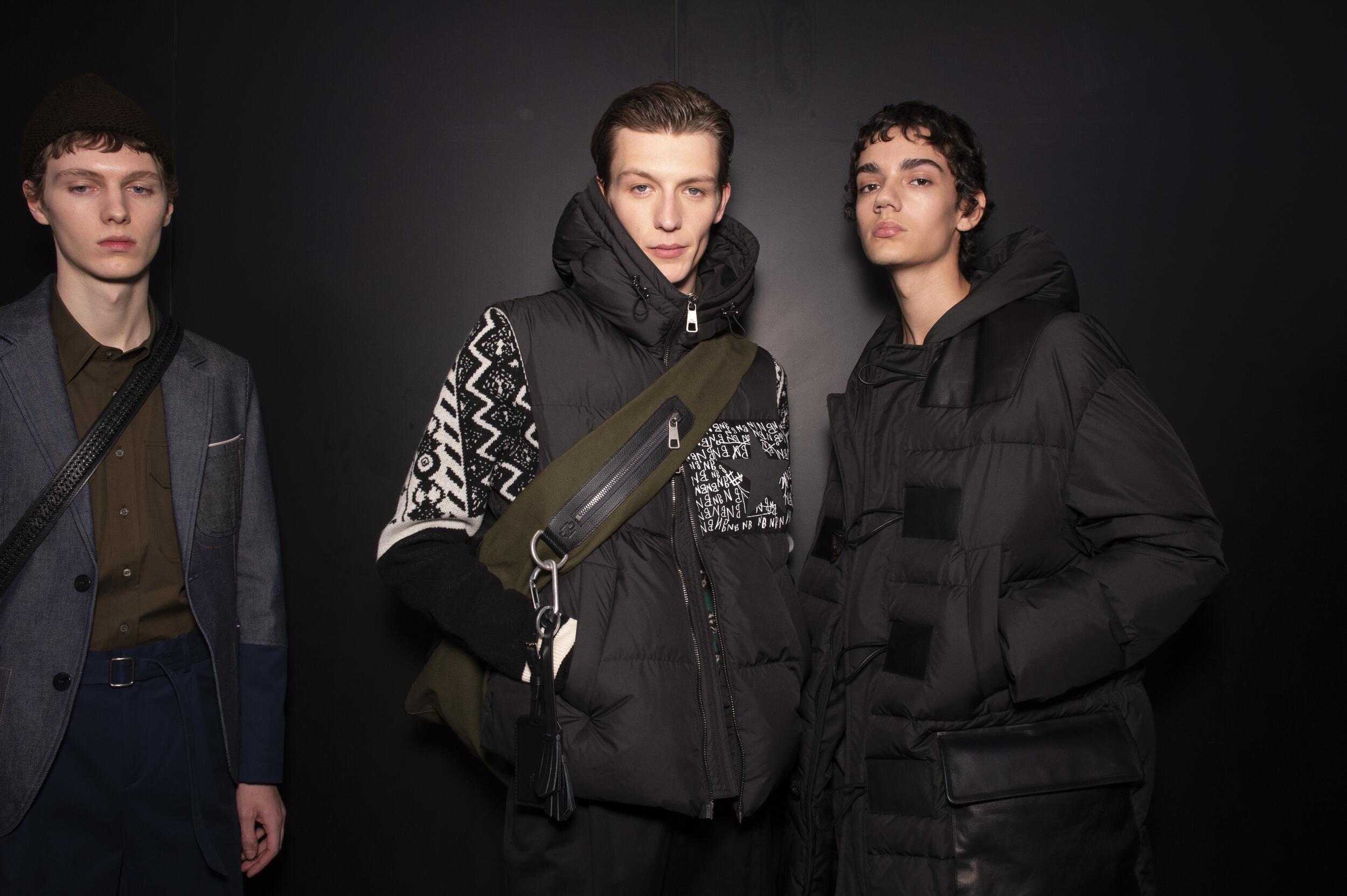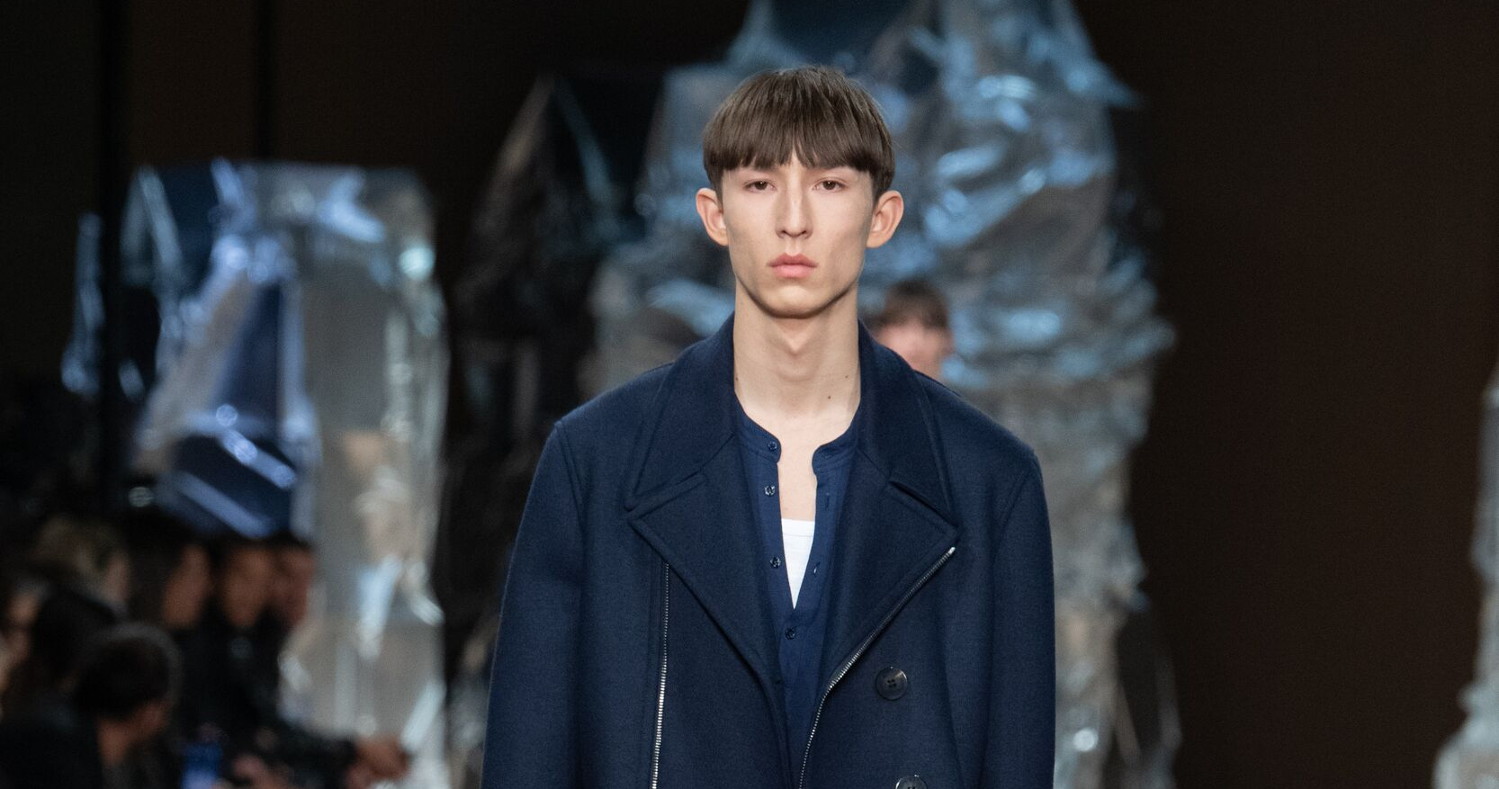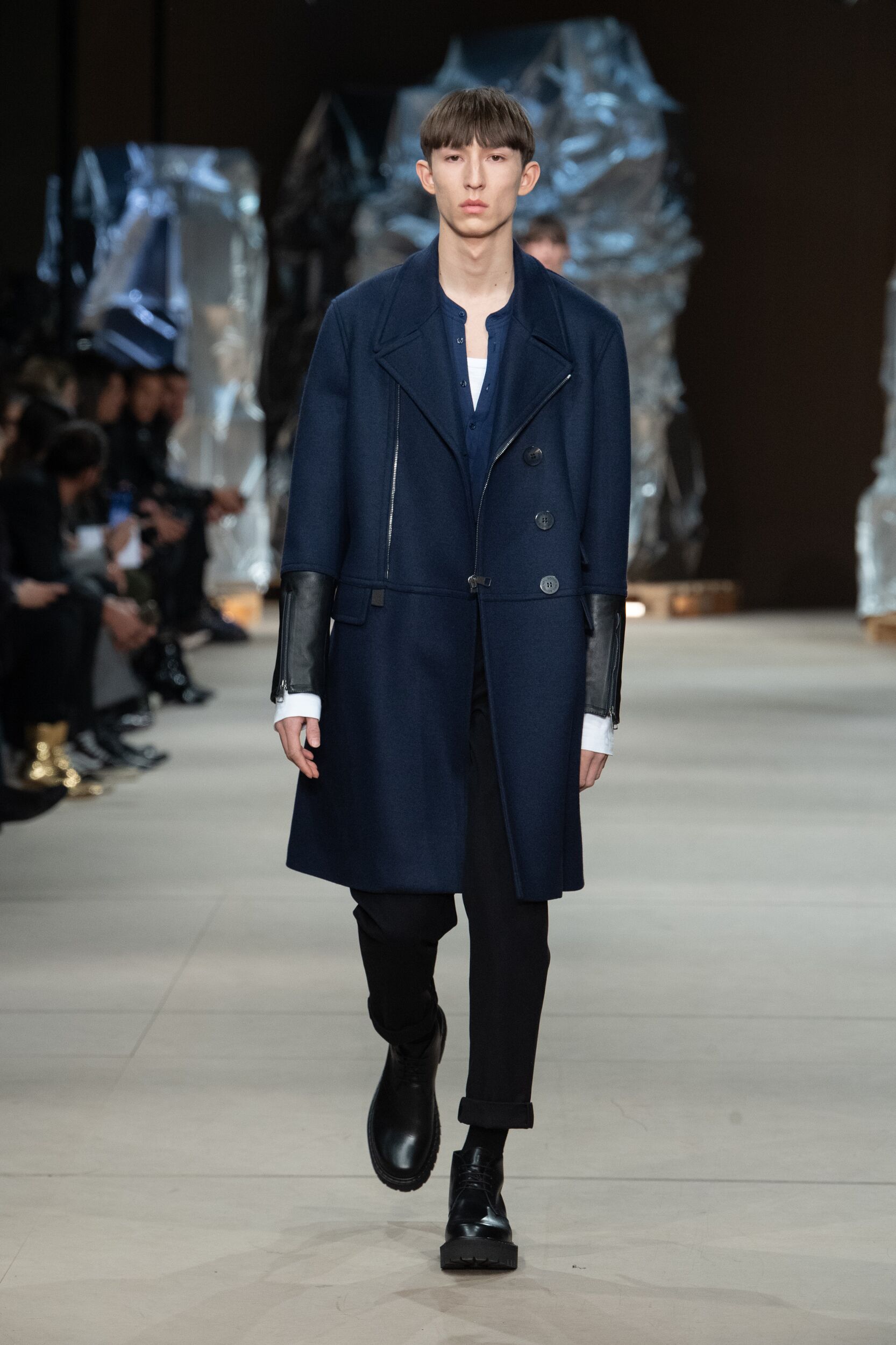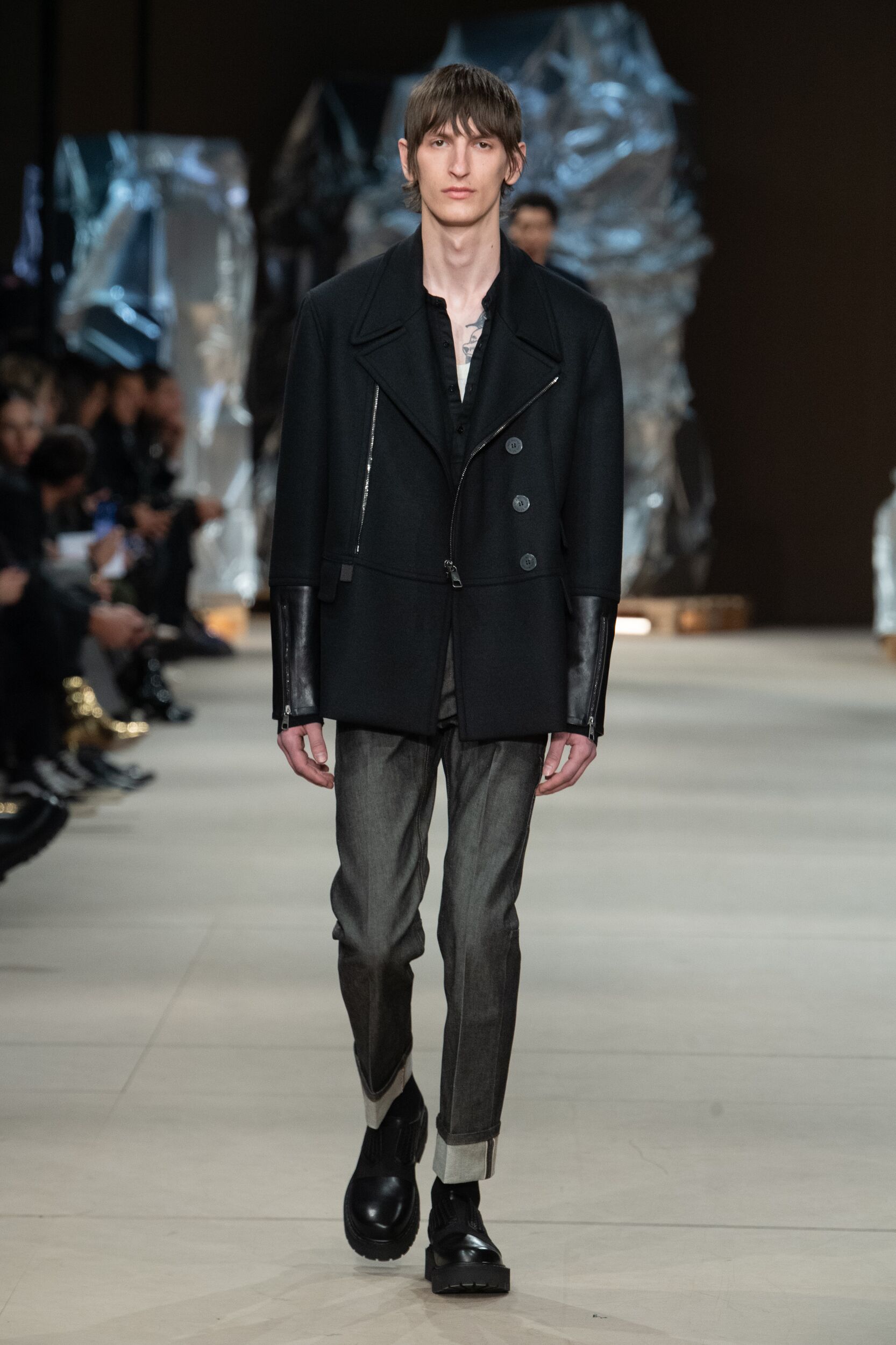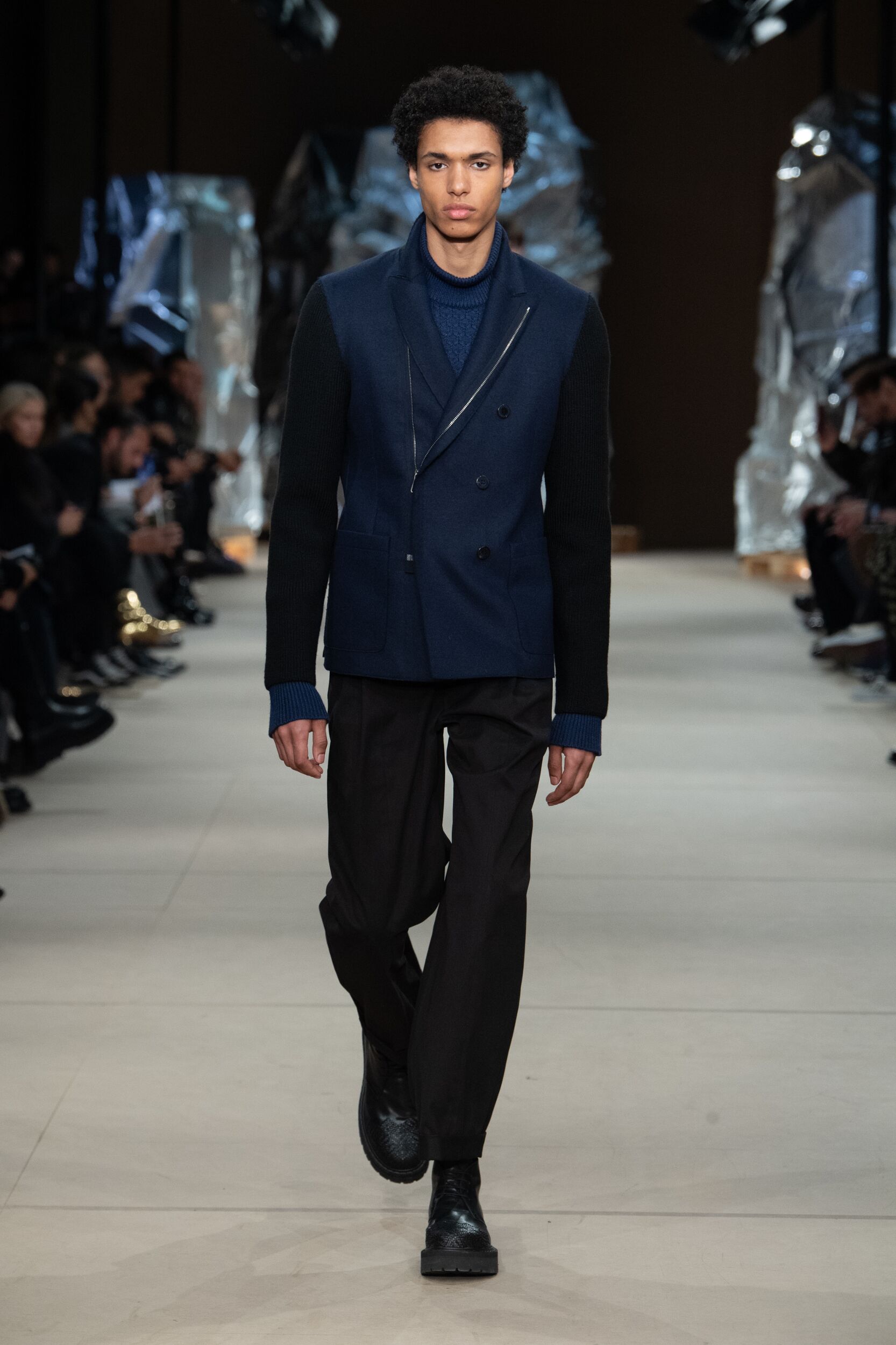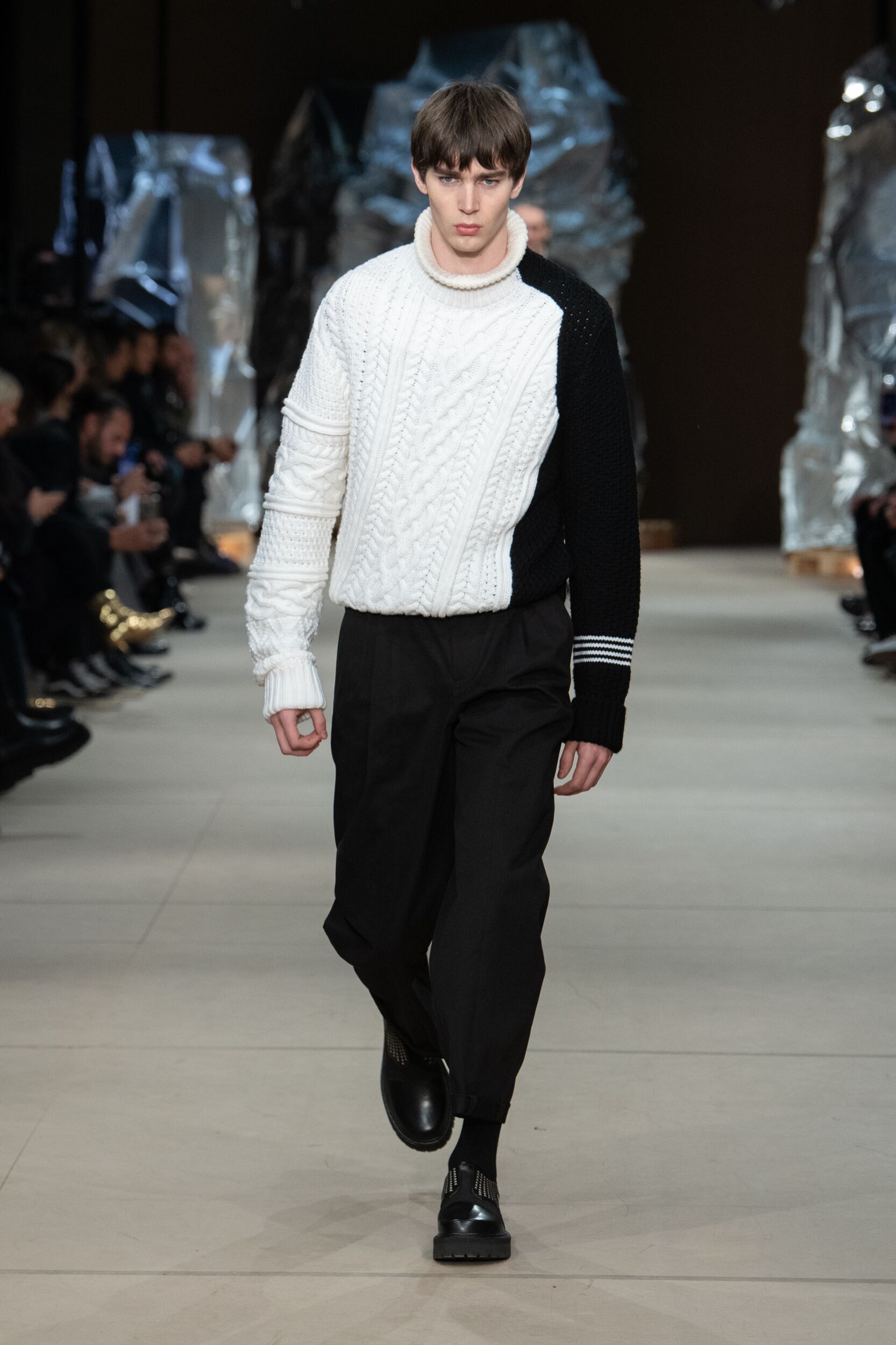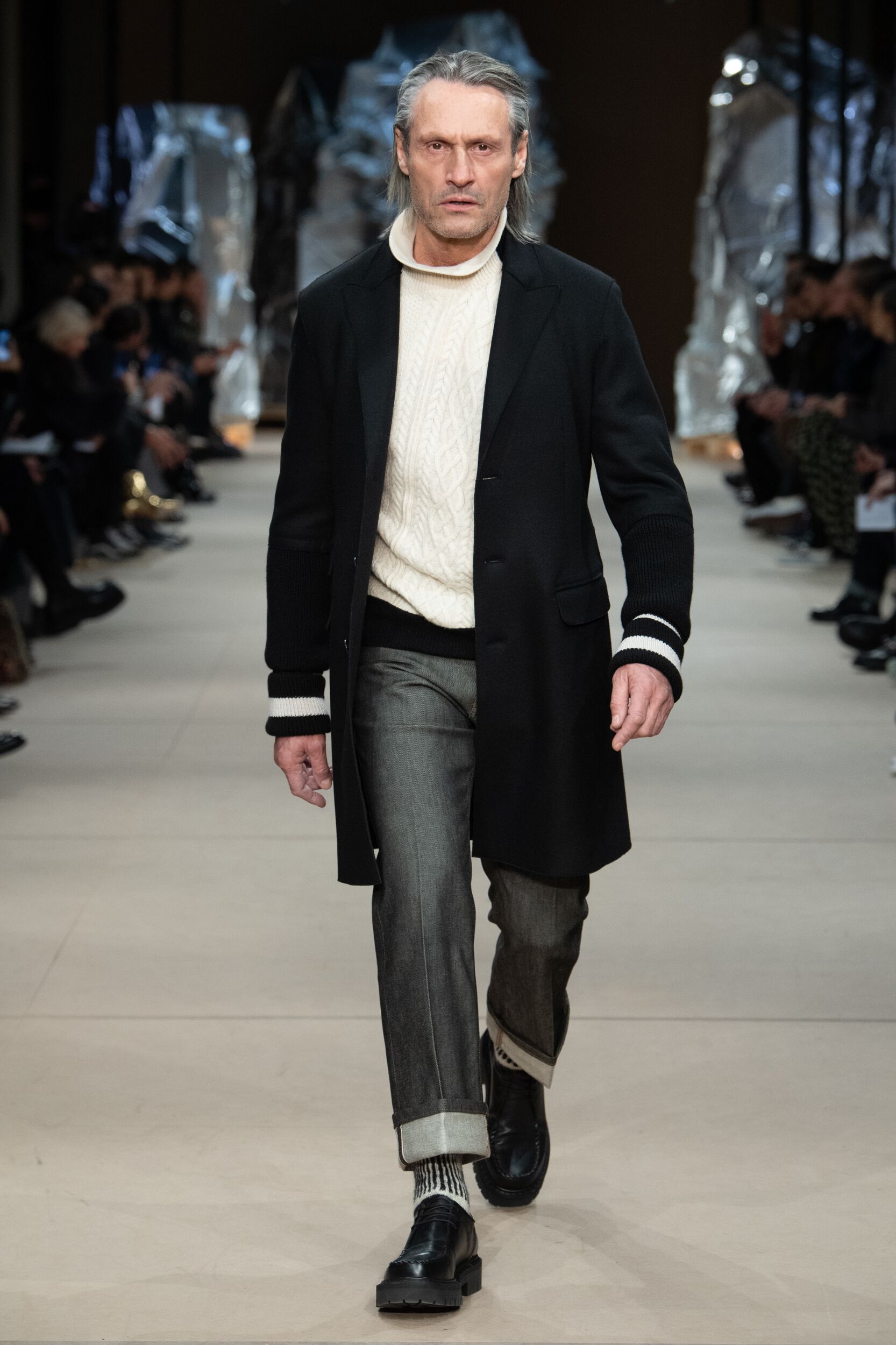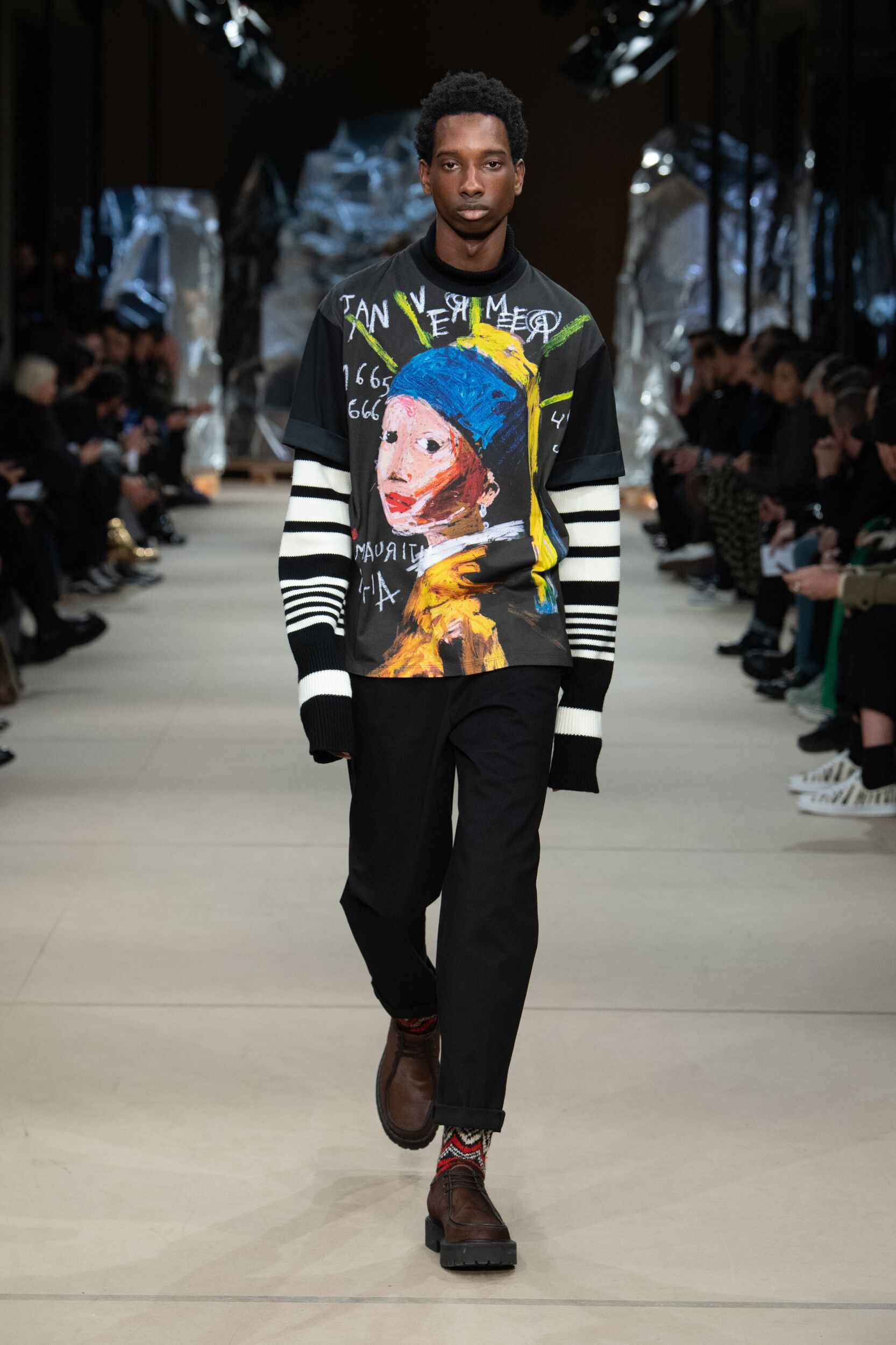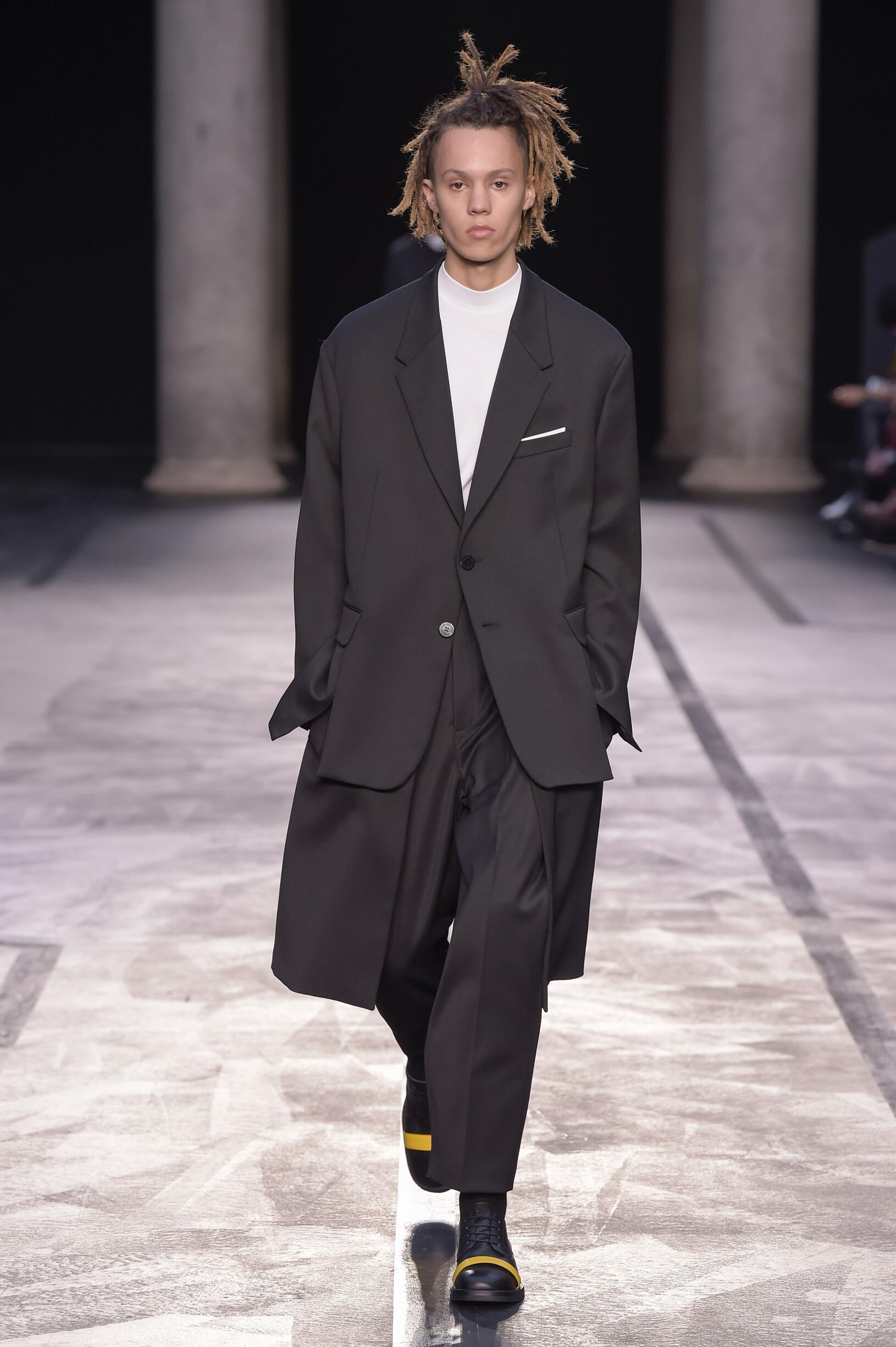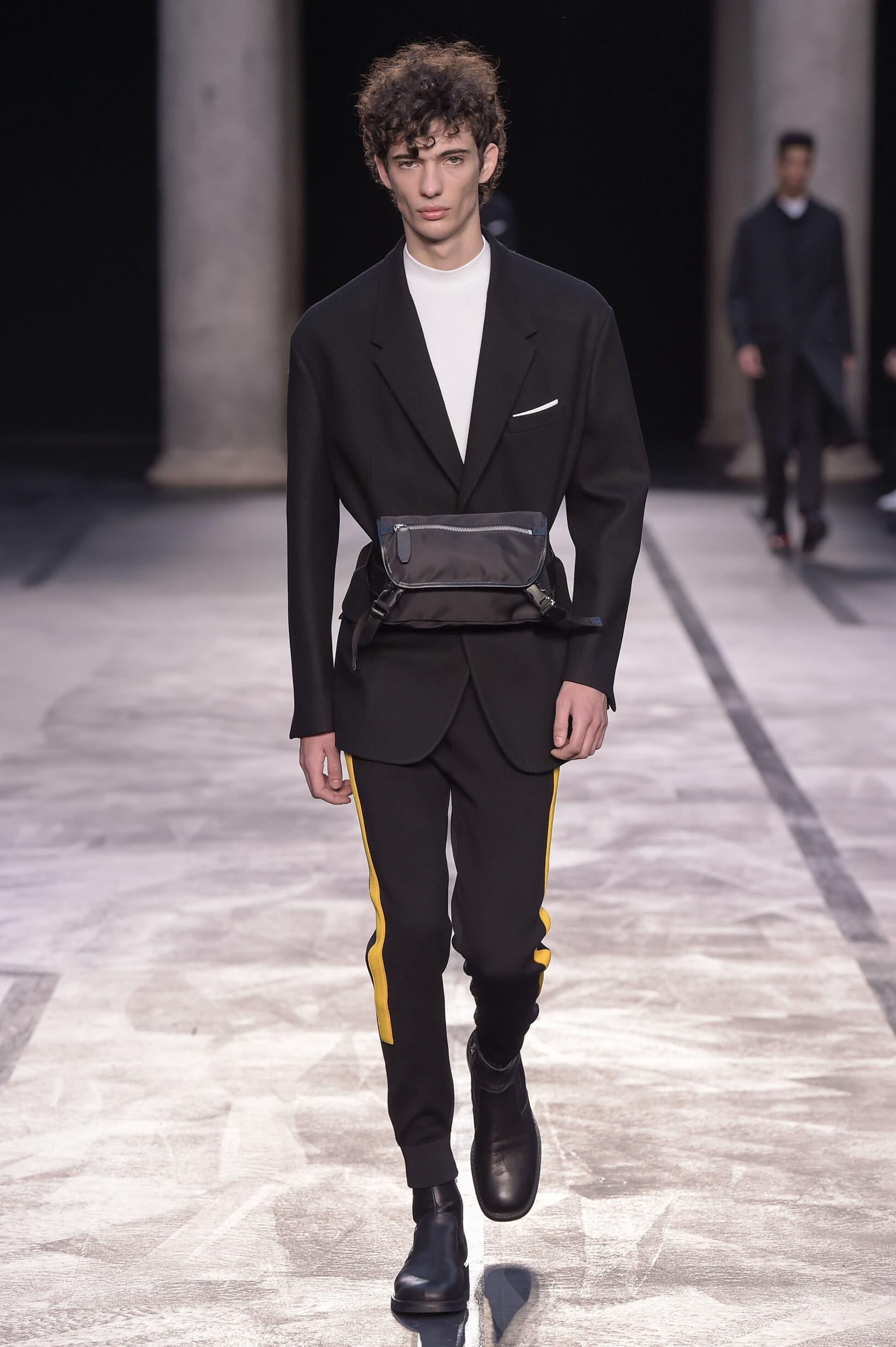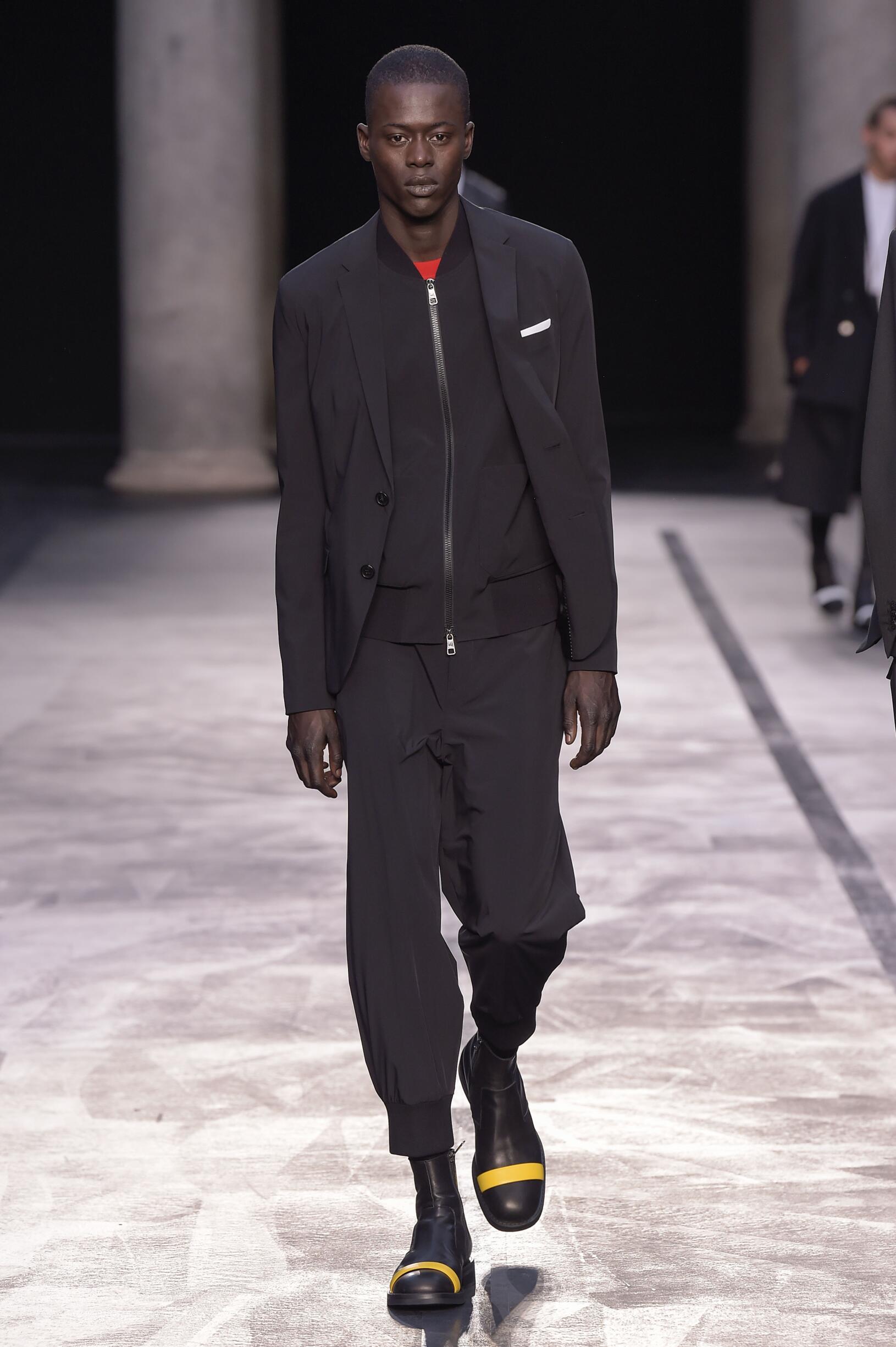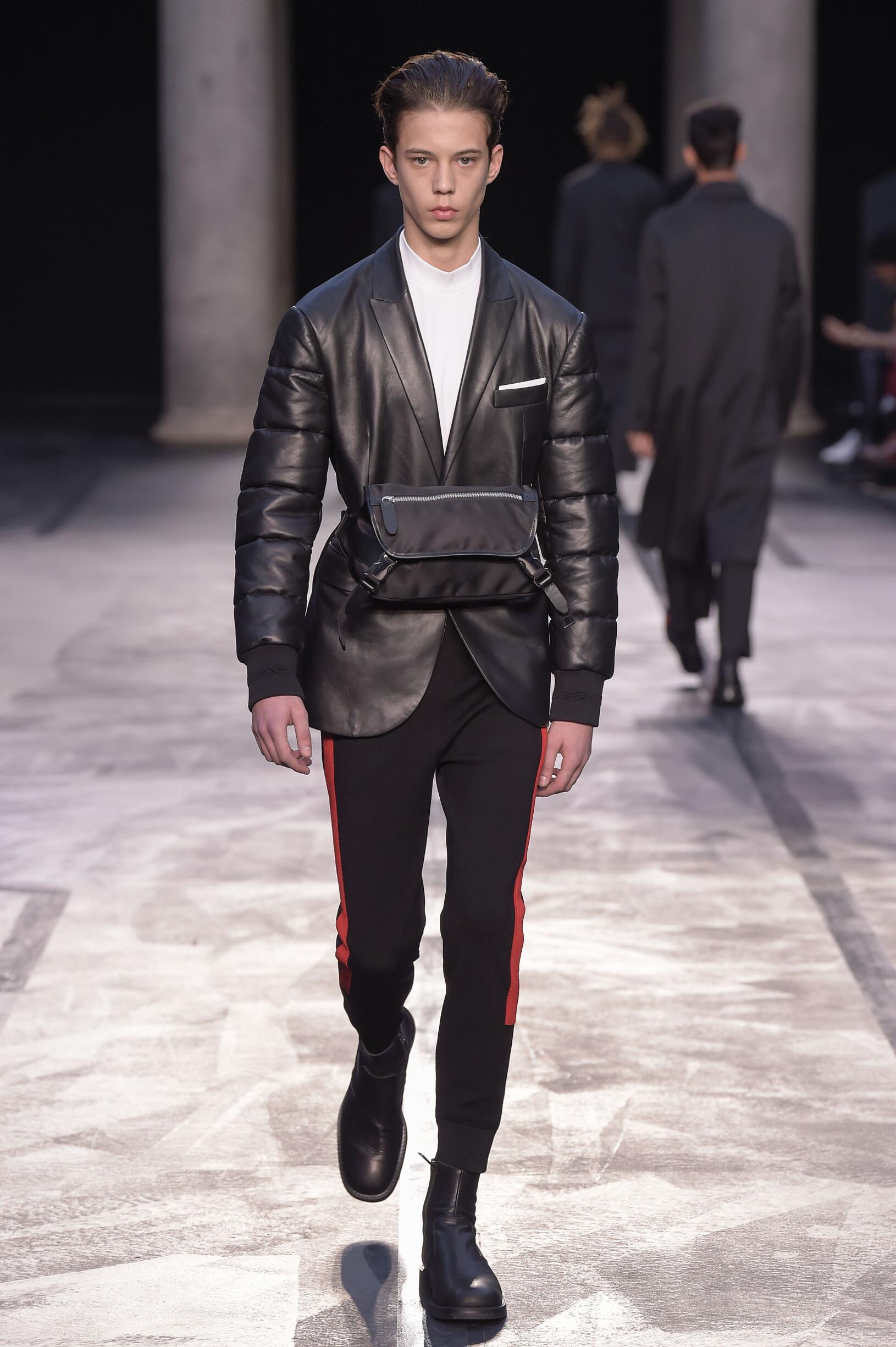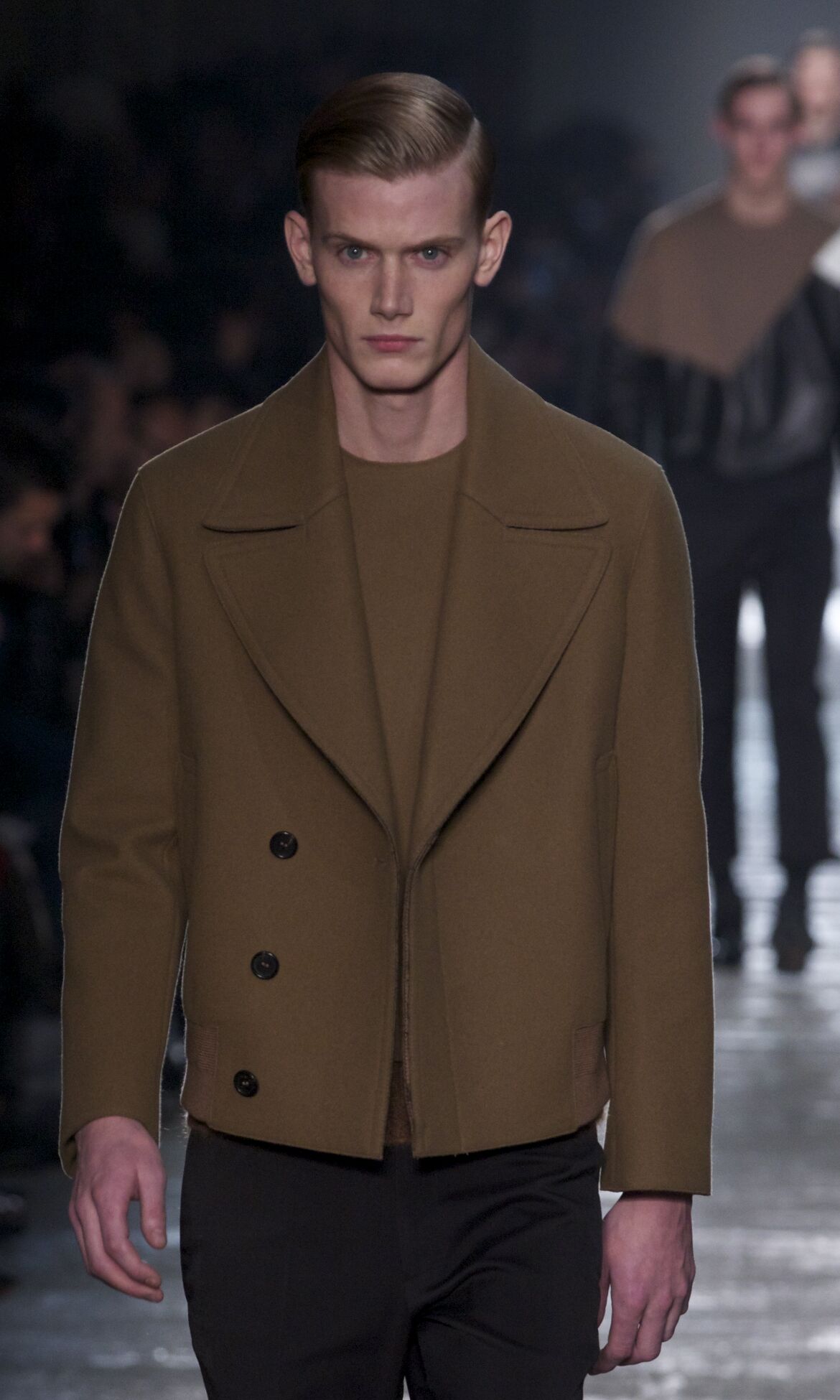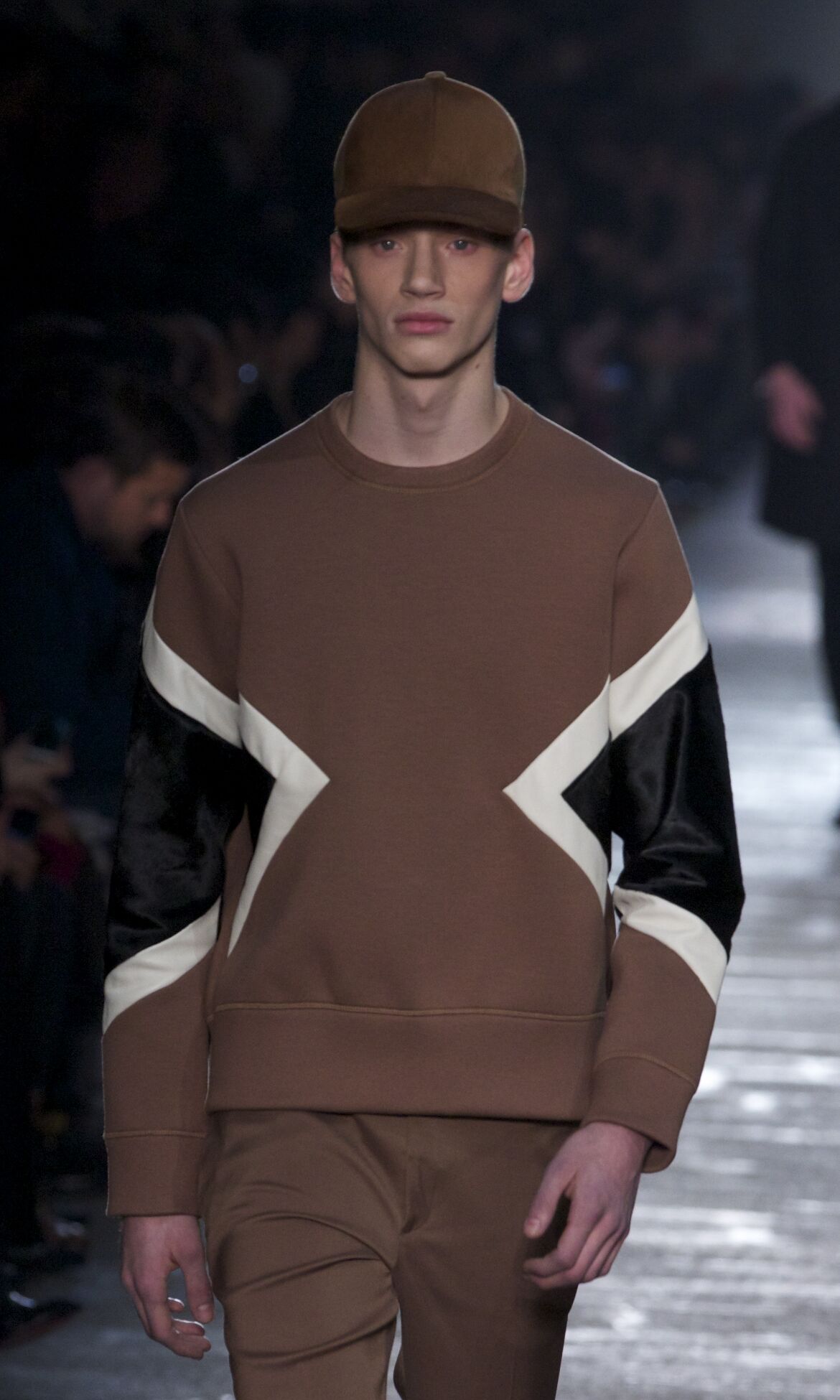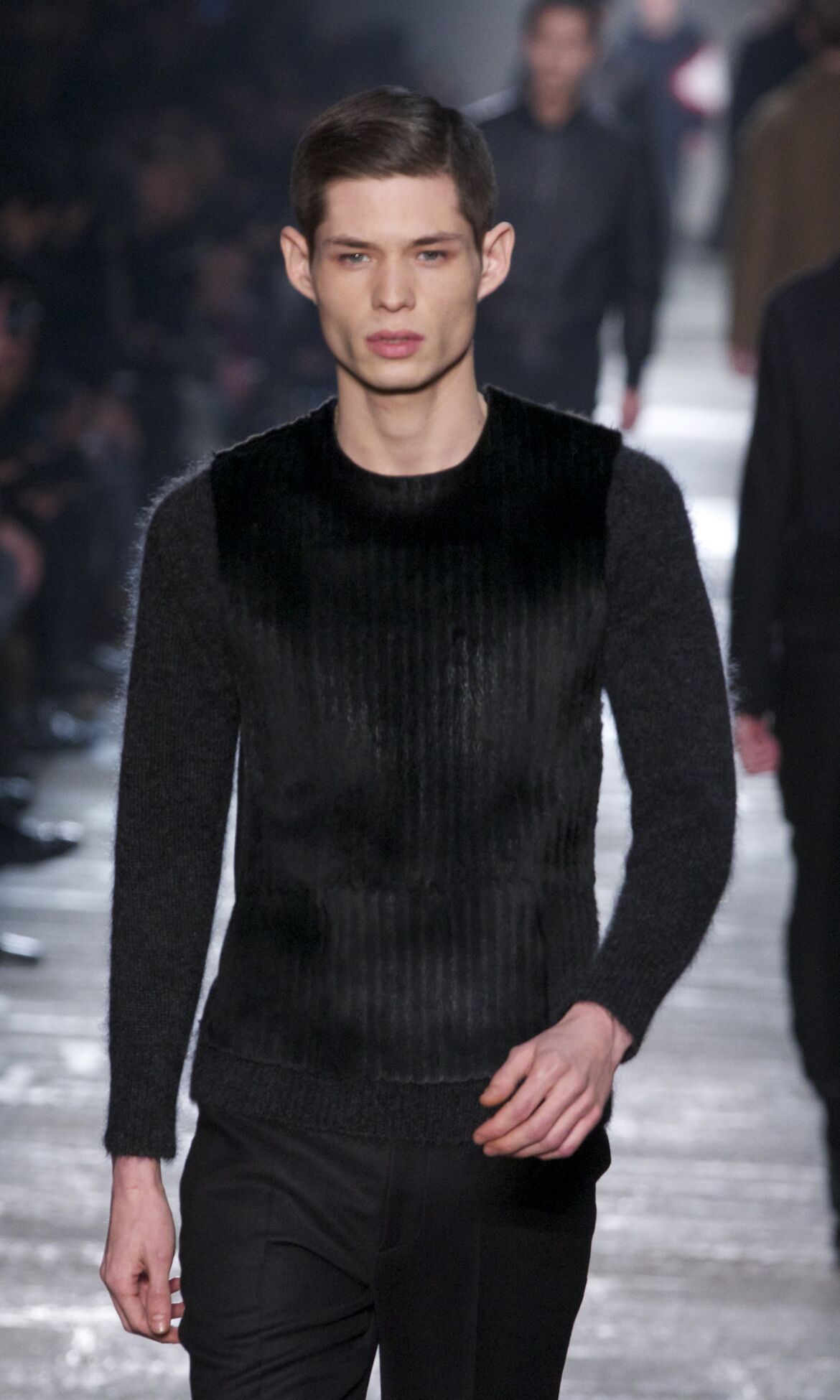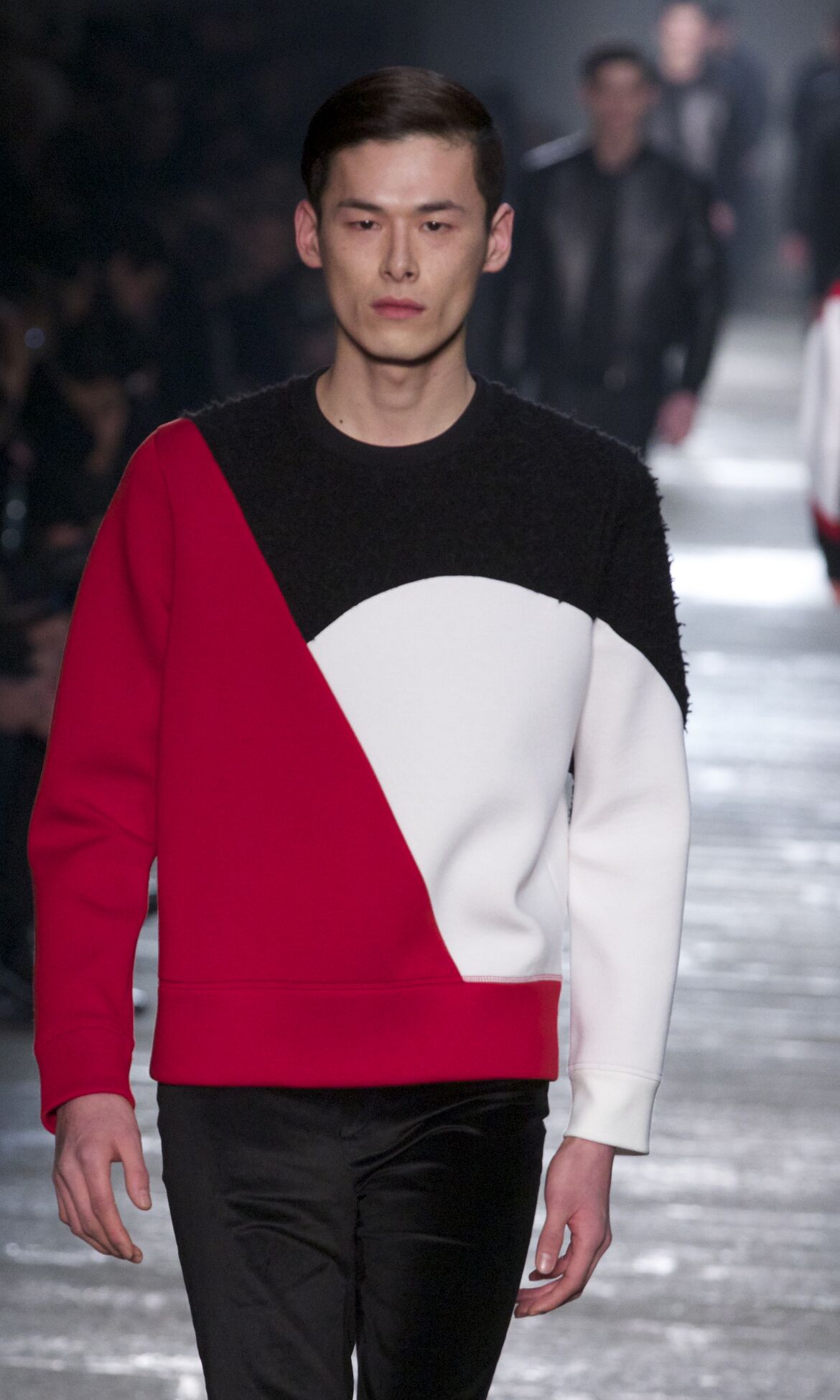Tue, January 21 2020 » Fashion Blog
NEIL BARRETT FALL WINTER 2020 MEN’S COLLECTION – MILAN FASHION WEEK
UNTITLED
The act of dressing can be a creative exercise, an artistic pursuit. Art and the artisanal: the dress of the artist as archetype inspired the Neil Barrett Autumn/Winter 2020 collection. This collection proposes tools, materials – a palette – for any man, and everyman, to create.
It is universal, for all ages and nationalities, an idea that has been constant within the Neil Barrett wardrobe. Underscoring Neil Barrett’s continuing fascination with the evolution of masculine dress, we can recognise even this creative freedom as a form of uniform, a way of dressing to express the man inside. Individual, and yet collective.
There is a tension, a conversation between the hand-made and the industrial, highlighting the beauty in both. Like different facets of art – Minimal versus Expressionist, Abstract against Figurative – different approaches to forms, fabrications and aesthetic can co-exist, in a man’s wardrobe as on a gallery wall.
Coats and jackets feature Neil Barrett’s signature hybrid details across the forearm, contrasts of function emphasising the importance of hands as creative tools; macro-scale details – rivets, stitching and fastening systems – play on proportion and perspective in visual games akin to paintings. They encourage us to look harder, to examine.
There are references to a back-catalogue of work: a retrospective. A Hybrid Biker-Coat is a direct reference to Autumn/Winter 2003; a down-padded jacket after an original example from Autumn/Winter 2000. The latter inspires an entire series of puffer archetypes – aviator jackets, sweatshirts, duffle coats – reinterpretations of garments with a new sculptural volume.
Accessories explore classics: bags are recognisable, cartridge bags, worker’s satchels, artist’s portfolios and messengers. Shoes are moccasins or desert boots, elevated through material and a new statement sole; a collaboration with Chinese athletics brand Li-Ning results in technical running shoes, an essential component of a new urban uniform.
Art here is inherently urban, tied with the industrial and modern: graffiti, the act of ‘tagging’, of making your mark and leaving a piece of yourself behind, inspires prints, embroideries and jacquards. This also connects with the gentleman traveller, the voyager and souvenir hunter – drawing inspiration from cultures visited, combining references and recollections into a unique hybrid. Hand-knit sweaters have a sense of Objet Trouve, sketched prints on wool are derived from Berber carpet patterns.
This season, Neil Barrett invited a Milan-based graffiti artist known as Red to work in residence and create new works to be integrated into the collection. Famous artworks are remixed and reimagined, alongside text-based works, including a new ‘NB’ graffiti tag jacquard. In a creative dialogue, these hand-worked art pieces become modern fabrications – elevating them to luxury, translating them from the world of art into fashion, and the language of Neil Barrett.
Tue, January 21 2020 » Fashion Blog
NEIL BARRETT FALL WINTER 2017-18 COLLECTION – MILAN FASHION WEEK
For his Autumn/Winter 2017 collection, Neil Barrett looks at thè past – his own, and that of his label – and reinvents it for thè twenty-first century. The foundatlon Is tailoring: a Nell Barrett hallmark, and thè root of proportlon In men’s clothing. Barrett focusses his attentlon on tradltional men’s sults, using them as a template for an exploratlon of proportlon and volumes.
Influenced by his art collage years In 1980s London and his family’s traditlon as milltary tallors, Barrett mlxes dlfferent flts In a litany of tailoring and coating fabrics, to create new silhouettes for his man. They have an echo of thè past, but feel resolutely contemporary.
Oversized jackets and coats sport a dropped shoulder, but are tailored to fit perfectly around this volume, contrasting with drainpipe trousers or knit joggers. Slender jackets are worn above wide cropped pants. The notion of thè hybrid is key: a hybrid silhouette, oversized or slim, is a signature.
Garments fuse elements of sportswear and tailoring, cutting track pants in tailoring fabrics with press-stud side fastenings, or trimmed with a sports stripe, sometimes painted. There are also hybrid garments, cross-breeding long coats with puffer jackets, jean jackets and biker styles, as well as single and doublé breasted suit jackets. The two can be separated, but fused together they form a unique proposition.
If tailoring forms one line of heritage, thè other comes from thè dynamic energy of thè 1980s. The street-style of thè eras magazines and thè style dubbed Buffalo is evoked in thè flashes of bright colour, reinterpreting Nick and Barry Kamen’s look. Yellow, red, hazmat orange and cobalt combine with an otherwise restrained palette of black, grey and white.
Underscoring thè influence of thè eras are lyrics from thè songs of Echo & The Bunnymen and The Cure, alongside graphic treatments derived from tour imagery of Siouxsie and thè Banshees, with permission from thè artists to use and rework their originai imagery. The show features their music on thè soundtrack, alongside modern musicians influenced by their legacy.
Contemporary counterparts, new iterations, like thè clothes on show. Looking back at Neil Barrett’s heritage inspired him to combine mens and womenswear in a single show, for thè first time in a decade. The women collection underscores thè fundamental themes of thè menswear – new volumes in tailoring, pops of primary colour, a fusion of sports and suiting.
The dropped shoulder is exaggerated above a drawn-in waist, while high slits allow slithers of brightly-coloured layers to show. Slashes under sleeves allow sensuous glimpses of skin under tailoring and shirting, adding a touch of thè feminine to thè quintessentially masculine.
Mens and womenswear share fabrics: nylon is a key contrast to traditional tailoring in pinstripe and chalk-stripe flannels, alongside coating wools and cashmere and fluid viscose-wool gabardine. Knits add texture and pops of brilliant, saturated colour, elongated into dresses for women and match with shirts for unconventional “twinsets” for men.
They are executed in slick technical knit yarns, intensely hued, or in mohair – a punk stalwart here used for intricate intarsia designs. The brilliant shades of thè knits are echoed in block-colour nylon shirts, and in details like hand top-stitching cross squared-toe boots, or straps of leather across trousers, shoes or utilitarian bags. The entire collection is a play on past and present: reinventing thè styles of thè past with thè proportions of today.
Fri, January 20 2017 » Fashion Blog
NEIL BARRETT FALL WINTER 2013 MEN’S COLLECTION – MILANO FASHION WEEK
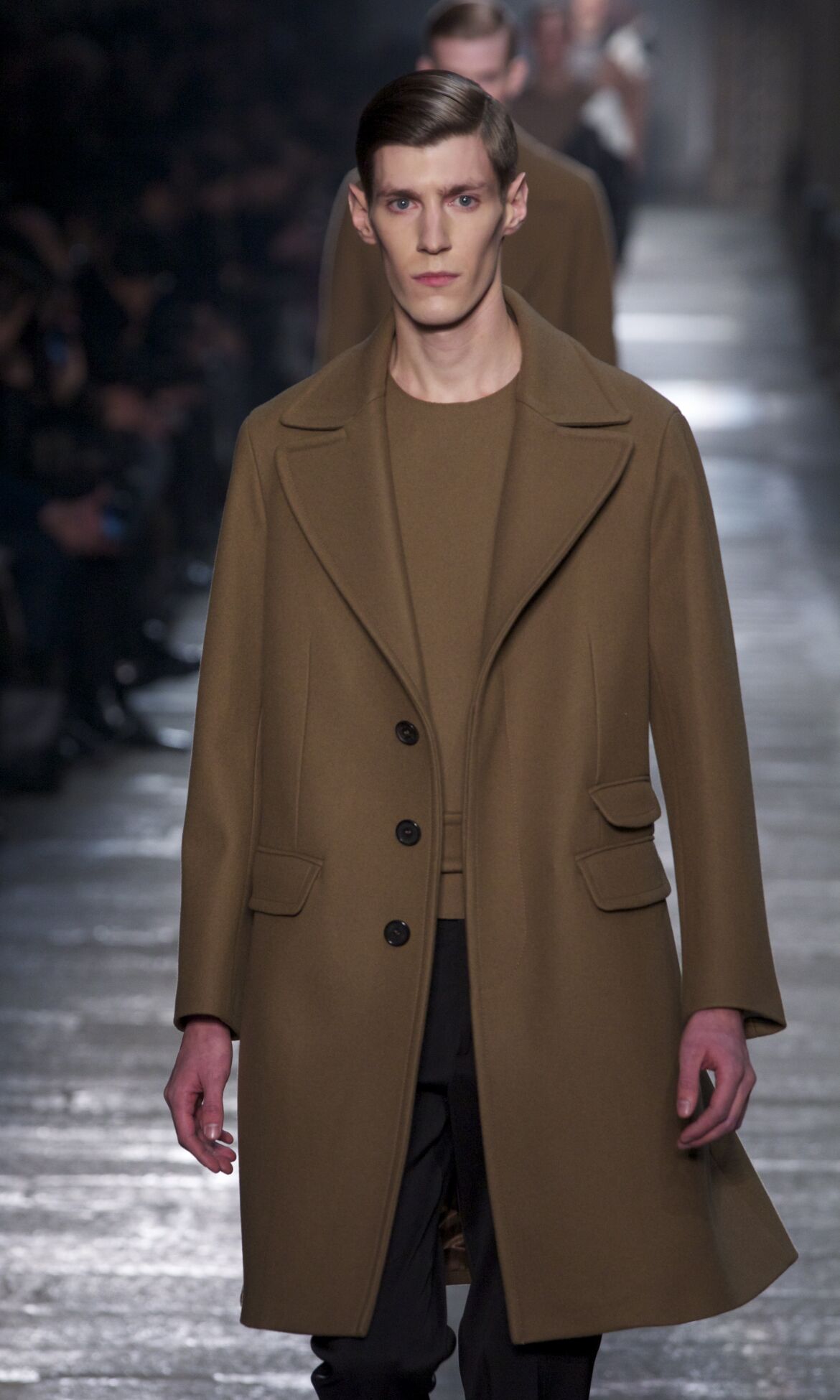
Structure. Texture. Precision. Those are the lynchpins of Neil Barrett’s fall/winter 2013 collection, inspired by the purity of the Bauhaus movement.
Translating the Modernist ethos into menswear, Barrett strips away superficial ornament, the seams and the cuts of the cloth forming the only decoration. The intersection of the curve and diagonal is key, an exercise in geometric and mathematical exactitude in design.
The collection revisits the aesthetic foundations of Neil Barrett, the purist cuts and Minimalism of the early nineties. The classic men’s overcoat is reworked alongside the sweatshirt and blouson, sportswear staples reconfigured with razor tailoring to function as casual or formal wear. All fastenings – buttons, zips and velcro – are concealed, another nod to the notion of Modernist purity.
The outerwear fit is slightly oversized, holding itself away from the form with underpieces fitted. Tailoring creates controlled volume, internal belts drawing fabric against the body. Shoulders seams are dropped to create emphasis, contrasting a rounded, emphatic torso with a skinny leg. Stretch jersey tailoring accentuates the attenuation.
The palette is strict: black, off-white, tobacco, charcoal, vibrant red and every shade of blue from darkest navy to pure primary. Colours are blocked diagonally to contrast or used tonally to highlight the tactile texture of fabrics. Those include lasered fur, mohair, finest nappa, ponyskin, velvet and sweatshirting, and a multitude of wools, from pressed astrakhan wool and fur-like Casentino through melange, rubberised finishes and compact, felted layers. Fabrics are bonded together to give seamless structure, a raw edge revealing the internal layers and creating graphic stripes to outline a garment.
Footwear is precise and hybrid: a single boot, a single shoe, both with a technical interior, crafted with precision and finished with a metallic toe-cap. Accessories continue the juxtaposition of textures through cuts by combining different precious skins – such as leather, python, ponyskin and ostrich – in a single Modernist surface.
Fri, February 15 2013 » Fashion Blog




